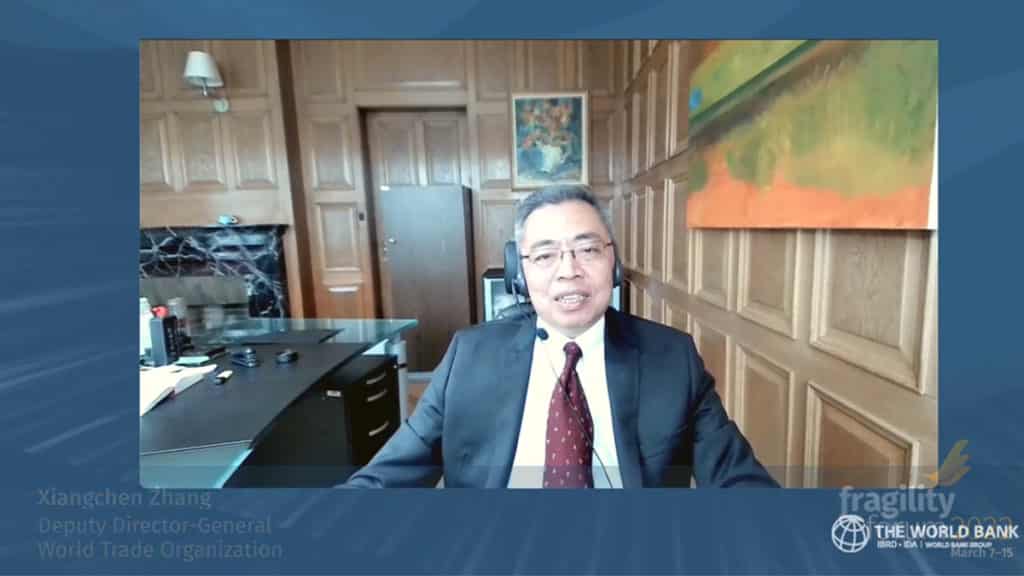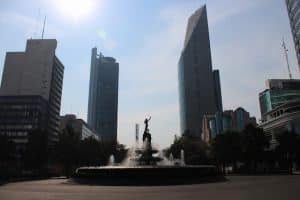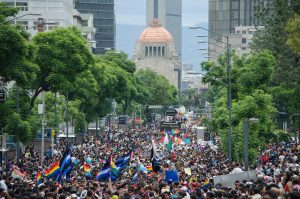El DGA Zhang señala que el comercio para la paz es uno de los fundamentos del sistema multilateral de comercio

La agenda del comercio para la paz se dio por sentada durante años, lo que dio lugar a que un grupo de países en situación de fragilidad y conflicto recordara que el comercio puede y debe contribuir a promover la paz y la estabilidad, según indicó el Director General Adjunto Xiangchen Zhang el 15 de marzo. En el Foro sobre Fragilidad organizado por el Banco Mundial, el DGA Zhang subrayó la labor del Grupo g7+ sobre Adhesiones a la OMC como principal portavoz de la OMC para apoyar a los países afectados por la violencia en un contexto global que está cambiando radicalmente. Las observaciones del DGA Zhang figuran más adelante.
(de momento sólo en inglés)
World Bank Fragility Forum
Trade For Peace: Addressing Fragility Through Economic Integration
Introduction
Good morning in Washington, and good afternoon in Geneva. My name is Zhang Xiangchen, a Deputy Director-General of the WTO. On behalf of WTO Director‑General Ngozi Okonjo-Iweala, I would like to welcome you to this session focused on Trade for Peace: Addressing Fragility through Economic Integration.
We value the opportunity to take part in the Fragility Forum and look forward to working closely with the World Bank in addressing the fragility agenda. A former World Bank economist, who pioneered work on fragility, is currently heading the WTO. We hope that this will add impetus to the fragility agenda at the multilateral level.
Today, I want to provide a brief overview on how trade and peace have evolved in the multilateral trading system; highlight the recent efforts to use WTO membership to promote peace; and discuss activities implemented under the WTO’s Trade for Peace Programme.
Trade and peace in the multilateral trading system
In the aftermath World War II, the international system was built to promote peace and prevent conflict from escalating on a global scale. This is reflected in the preamble to the Charter establishing the United Nations which lists peace as its main purpose.
The idea that trade can play a role in promoting peace is not new. The parties to the 1948 Havana Charter establishing the International Trade Organization (ITO) pledged to cooperate in the fields of trade and employment “to create conditions of stability and well-being which are necessary for peaceful and friendly relations among nations.”
Although the ITO never materialized, it paved the way for the establishment of the General Agreement on Tariffs and Trade (GATT), a pillar of the global economic architecture, together with the World Bank and the IMF. This architecture was built on the belief that greater economic cooperation and integration can provide a foundation to promote development and prosperity, thereby giving peace a better chance. The GATT grew into the WTO in 1995.
For over seven decades, trade has helped promote and sustain peace in many parts of the world. Fuelled by trade growth, the global economy expanded at an unprecedented rate, lifting billions out of poverty. Trade has also been a key driver for integration projects in parts of the world which had suffered from conflict. According to the World Bank, the world extreme poverty ratio fell from 42.7% in 1981 to 9.1% in 2021 (1).
Following the establishment of the WTO, 60 states and separate customs territories have applied to join the organization, with Turkmenistan becoming the most recent applicant last month. 36 have become fully fledged members. While individual motivations to join the WTO may differ, WTO membership has ultimately presented an opportunity for economies to realise their potential by adopting the WTO’s multilaterally-agreed set of trade rules and practices. In other words, accession has served as an effective instrument for driving domestic reform. On average, joining the WTO through Article XII results in a 30% increase in GDP (2).
The Trade for Peace Programme
The trade for peace agenda had been taken for granted in the WTO and had not been explicitly pursued. It took a group of nine fragile and conflict affected Least-Developed Countries (LDCs) (3) to recall one of the raisons d’etre of the rules-based multilateral trading system: namely, that trade can and should play a role in promoting peace and stability. This group, called the g7+ WTO Accessions Group, was established in 2017 and has been the leading voice calling for the WTO to play a more active role in supporting the fragility agenda.
We are pleased that Ms. Maryan Hassan, former Chief Negotiator for Somalia’s accession, who played a key role in the establishment of the Group, will moderate the discussion today. You will hear from Mr. Abraham Kamara, Deputy of the Permanent Mission of Liberia to the UN and other international organizations in Geneva, on behalf of Minister Mawine G. Diggs who could not join us today. Liberia is currently leading the g7+ WTO Accessions Group, together with Timor-Leste. In this regard, we are very honoured to hear from Mr. Habib Mayar, Deputy General Secretary of the g7+ who will deliver a statement on behalf of His Excellency Xanana Gusmão, former President of Timor-Leste, after my remarks. The Group’s vision has been shared by other acceding governments which are non-LDCs but that have also suffered from conflict. Here, I am pleased to welcome Minister Amin Salam of Lebanon, who is leading his country’s accession efforts.
It was the vision of the fragile and conflict-affected countries which drove the establishment of the WTO’s Trade for Peace Programme. In collaboration with partners from the Trade for Peace Network, the WTO has implemented activities through the programme’s four pillars which include: (i) Political Engagement and Partnerships; (ii) Outreach and Dialogue; (iii) Research; and (iv) Training and Capacity Building. These activities are aimed at gaining a better understanding of the necessary and sufficient conditions to establish and maintain peace, and the role that trade and the multilateral trading system can play in this regard.
Let me highlight four activities which I believe are of particular interest to this Forum. First, the WTO launched the Trade for Peace podcast to bring different perspectives on the trade and peace nexus — from policy-makers to voices from the ground. We have already aired 19 episodes involving 29 guests from around the world.
Second, we have launched the Trade for Peace Research and Knowledge Hub, bringing together researchers with the goal of sharing knowledge on the trade and peace nexus. Our efforts include a publication on Trade for Peace, which will set out a research agenda that requires an inter-disciplinary approach, in addition to country- and region-specific approaches.
Third, we are designing training programmes with trade and peace negotiators, development experts, and humanitarian actors who are well-placed to understand the complexity of fragile situations and explore creative approaches to address them.
Fourth, the WTO plans to organise a high-level Trade for Peace Conference during the second half of this year, which will be the first opportunity to consolidate the expansion of the Trade for Peace community.
Conclusion
With this, I look forward to hearing the insights of Mr. Habib Mayar on behalf of His Excellency Xanana Gusmão and the distinguished speakers on the panel, as well as questions and comments from the audience. Thank you.
















